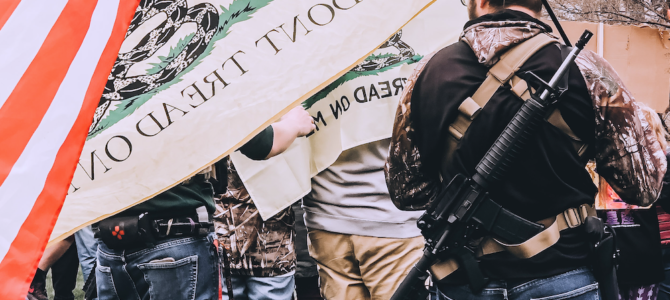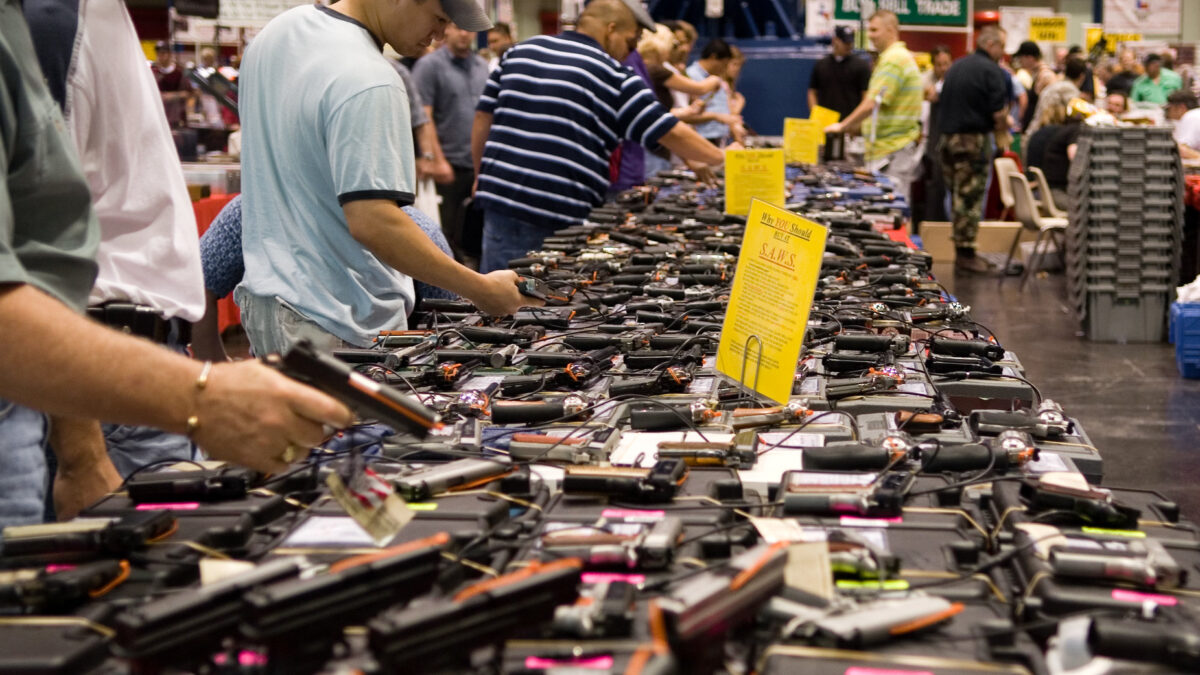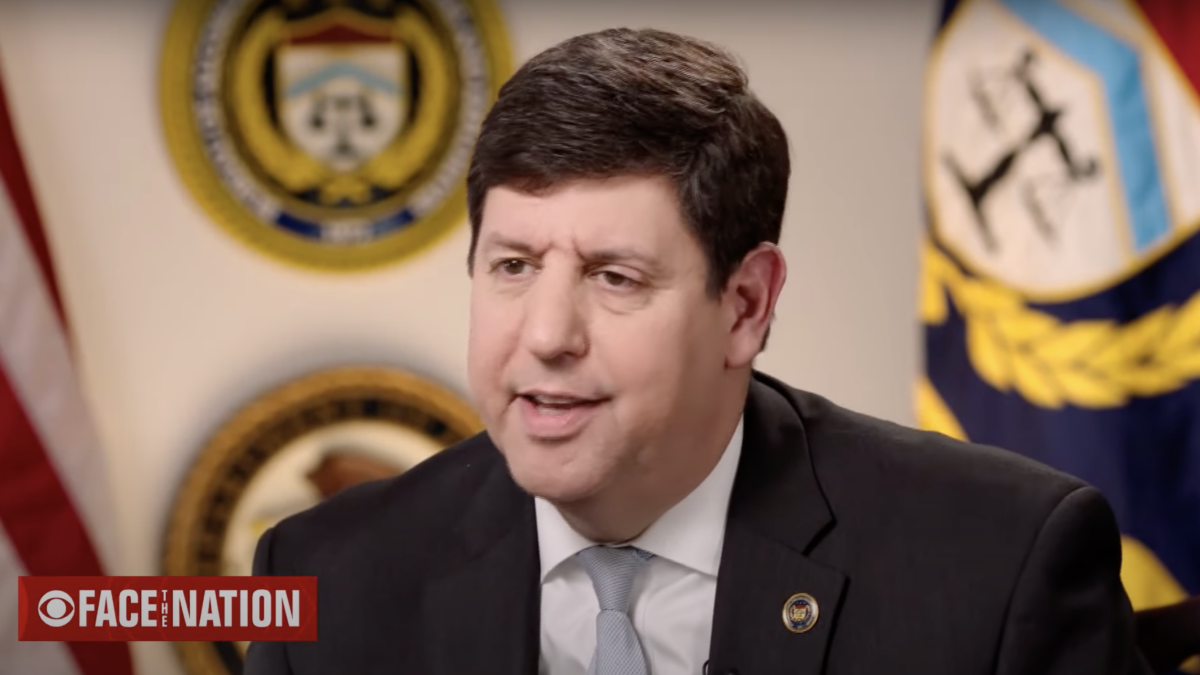
It is for defense against tyranny that the Second Amendment protects the right to keep and bear arms and, as the late Jeff Cooper observed in The Art Of The Rifle, “a citizenry armed with rifles simply cannot be tyrannized.” Cooper wrote, “there are more good men than evil, and while the latter cannot be persuaded to the path of righteousness by propaganda, they can certainly be corrected by good men with rifles.” Cooper, a Marine who, as a civilian, developed the modern technique of defensive pistol shooting, knew the difference between a rifle and a handgun.
Not everyone does. On April 30th, among the hundreds who protested in Lansing against Gov. Gretchen Whitmer’s lockdown order related to the most recent virus from communist China, a few carried rifles. They did so prematurely. Whatever may be said about Whitmer’s order, it does not constitute tyranny, as indicated by the facts that people were able to protest freely, Whitmer’s order is being challenged in court, and an effort to recall Whitmer is underway.
Nor does Whitmer’s order threaten to render people defenseless against tyranny, as did General Gage’s effort of April 19, 1775, as do semi-automatic firearm bans imposed by Democrats in several states, as did the Canadian Liberal Party’s recent ban on 1,400 makes and models of firearms, and as the Supreme Court’s decision in District of Columbia v. Heller (2008) may, for reasons explained herein.
The late baseball legend Yogi Berra once said “you can observe a lot by just watching.” Had the rifle-carriers remembered that wisdom, they would have noticed that the proverbial 99.9 percent of protestors—some of whom likely carried concealed handguns for self-defense as they would any other day—left their rifles at home.
Holding the solution inherent in the Second Amendment in reserve, the majority of protestors exercised rights protected by the U.S. constitution’s First Amendment and by the Michigan constitution’s analogous provision, “The people have the right peaceably to assemble, to consult for the common good, to instruct their representatives and to petition the government for redress of grievances.”
The majority of protestors understood intuitively what the Framers of our Bill of Rights did in part because of their familiarity with William Blackstone’s Commentaries On The Laws Of England, of which the section pertinent in this instance reads: “To vindicate (the “absolute” rights of personal security, personal liberty, and private property), when actually violated or attacked, the subjects of England are entitled, in the first place, to the regular administration and free course of justice in the courts of law; next, to the right of petitioning the king and parliament for redress of grievances; and, lastly, to the right of having and using arms for self-preservation and defence.”
Emphasis on the word “lastly.” The right to arms, protected by U.S. and Michigan constitutions, is the right that protects all other rights. However, it is to be exercised for that purpose as a last resort or in the most egregious of acute circumstances, not when there is no threat to life or serious threat to liberty, and certainly not when a lesser threat—such as a temporary lockdown order—can be dealt with through the normal political and legal processes.
Semi-Automatic Rifles Are Not ‘Dangerous And Unusual’
Though the few who carried rifles at the Lansing protest did so prematurely, they did not, as one TV talk show host claimed, threaten law enforcement officers or anyone else. An armed threat is illegal and would have resulted in an arrest, and no such arrest has been reported. The distinction between merely possessing a firearm and using it in a threatening manner should be obvious to everyone. However, in District of Columbia v. Heller (2008) the Supreme Court ignored the distinction to justify banning one type of firearm, a mistake Democrats hope the Court will repeat when it hears a case challenging a ban on semi-automatics.
Heller correctly observed that the Second Amendment protects an entirely fundamental, individual right “to possess and carry weapons in case of confrontation,” including “all instruments that constitute bearable arms,” and concluded, therefore, that the District’s ban on the possession of handguns was unconstitutional. However, as I explained here and here, the Court additionally opined, contradictorily and incorrectly, that the right to arms is limited to those that are “in common use” and, therefore, the federal law that prohibits the private possession of a fully-automatic firearm manufactured after May 19, 1986—an arguably uncommon type of firearm, in part because of that law—is not unconstitutional.
The Court arrived at that conclusion by mischaracterizing its decision in U.S. v. Miller (1939) and by claiming that the ban on fully-automatic firearms “is fairly supported by the historical tradition of prohibiting the carrying of ‘dangerous and unusual weapons.’”
However, as America’s leading Second Amendment historian, attorney Stephen Halbrook, explained in “Going Armed With Dangerous And Unusual Weapons To The Terror Of The People: How The Common Law Distinguished The Peaceable Keeping And Bearing Of Arms,” weapons have not generally been considered “dangerous and unusual” in and of themselves, nor if they have been carried in a peaceable manner, but rather if they have been carried in a manner apt to terrify people. As an early example, Halbrook noted, “it was an offense under the (English) Statute of Northampton (1328) to go or ride armed in a manner that creates an affray or terror to the (King’s) subjects. It was not an offense simply to carry arms in a peaceable manner.”
Courts in this country have held essentially the same view. For example, in State v. Huntley (1843), the Supreme Court of North Carolina explained, “the carrying of a gun, per se, constitutes no offense. For any lawful purpose . . . the citizen is at perfect liberty to carry his gun. It is the wicked purpose, and the mischievous result, which essentially constitute the crime. He shall not carry about this or any other weapon of death to terrify and alarm, and in such manner as naturally will terrify and alarm a peaceful people.”
Cases challenging state bans on semi-automatic firearms have been appealed to the Supreme Court of the United States, and Democrats working toward civilian disarmament hope to prevail in part by characterizing semi-automatics as “dangerous and unusual” even when they are kept and borne in a peaceful manner, and even though they are owned by millions of Americans.
In reviewing those bans, the Court should heed Justice Brett Kavanaugh’s recent suggestion that its errant rulings may warrant correction when they are “egregiously wrong” and have had “real-world effects on the citizenry.” Heller’s “dangerous and unusual” error surely fits that description.









